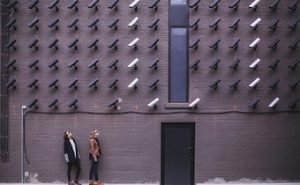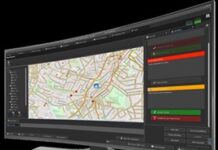
In China, the reduction of COVID-19 cases in the country where they first emerged offers hope for all nations as they deal with their own outbreaks. However, researchers at Memoori suggest that as the world begins to understand more about the Chinese government’s response, many in the West are starting to realise that it may be impossible to replicate China’s use of restrictions and surveillance technology to control the spread of the virus.
The Chinese government collects an immense amount of data about its citizens and they have found innovative ways to utilise that surveillance culture to tackle the coronavirus. As lockdowns went into place across China in January, residents of large residential complexes and neighborhoods are forced to pass through facial recognition-based access control systems to exit to the outside world. Data from those systems along with data from the over 200 million video surveillance cameras around the country are fed into a central database and analysed using machine learning. In addition to centralised payment and social apps like Wechat, the Chinese government is able to track the movement of specific people as they move around urban areas.
Advanced epidemic control
While China has been heavily criticised for its use of surveillance in everyday life, the technical infrastructure they have created and the expertise they have developed over years of mass surveillance now forms the basis of the most advanced epidemic control system ever attempted. When a Chinese citizen arrives at a hospital with symptoms, the hospital staff will register their name with the central database, which will inform the healthcare system of everywhere that person has been in the last 14-days and every person they have interacted with. Those places can then be targeted for disinfection and those potentially infected people can be ordered to isolate, the people and places they encountered can also be identified.
Colour coded infection risk cards
Memoori has found that every Chinese citizen is then given a colour-coded card to indicate their infection risk level. Red cardholders are confirmed cases and the people who have been in close contact with them, amber cardholders show a possible risk of infection from living or spending time in areas that have seen confirmed cases, while green cardholders show little or no chance of infection. A sophisticated algorithm has been developed to track everyone and adapt in real-time to change people’s status as new cases are confirmed, the physical cards replaced at the numerous check-points and access control gates across the country. The ability to move around then depends on the colour of your card.
Privacy laws versus health risk
While it is based on the same human rights protest inducing technology that has been so heavily criticised in China and around the world, the system seems to be working. By linking confirmed cases to all the places those people have been and linking those places to all the other people who have visited them, the Chinese government is able to keep up with the spread of the virus, isolating all those at risk and allowing the rest of the population to continue their lives. The system has allowed China to control the outbreak and maintain economic activity where possible, limiting the health and economic impacts of this biological disaster.
“Public life is very reduced but infected people rarely spread the virus beyond their household. That’s how the epidemic truly came under control,” says Gabriel Leung, of the Faculty of Medicine at the University of Hong Kong. “How long can you close schools for? How long can you lock down an entire city for? How long can you keep people away from shopping malls? And if you remove those [restrictions], then is it all going to come right back and rage again? So those are very real questions,” he said.
Economy versus health
One-by-one other countries in Europe and the rest of the world have enacted their own forms of lockdown, each group of governing politicians waiting until the last minute to find a balance between health and economy. Few countries, however, have the culture of governance that allows them to monitor people and restrict movement to the level we saw in China. Furthermore, few have the surveillance infrastructure or the technical expertise to put such a system in place.
As world leaders and health authorities look to China’s surveillance systems, there could be an increased appetite to replicate such programmes in their own countries in order to be ready for future epidemics. People around the world will have a greater tolerance for increased surveillance on the back of a global health disaster that could have been better controlled with that kind of technology in place. In China, the already high-level of surveillance increased significantly during the crisis and many in the country now fear this new level will become the new normal, as the government takes the opportunity to expand such infrastructure for the long-term.
Surveillance revolution
One group above all others waits in anticipation of the monitoring revolution that may follow the coronavirus crisis, the video surveillance industry. The global market for physical security products was worth $34.3 billion in 2019 and is heavily dominated by the video surveillance segment, according to the most recent Physical Security Business report from Memoori. It explains how two major Chinese manufacturers gained a 40% market share of the world’s video camera business through a “race to the bottom” that undercuts the global competition.
“In 2019, AI Technology applied to video surveillance has convinced the market that by 2020 it will become mainstream over the next 10 years,” the Q4 2019 Memoori report stated. “There is a critical need to make full use of the massive amounts of data being generated by video surveillance cameras and AI-based solutions are the only practical answer. Modern chip architecture with AI software can comb through vast volumes of data and boost security and safety. Granted, there is a lot of development in this field that we are yet to see, but the path towards AI seems quite clear,”











